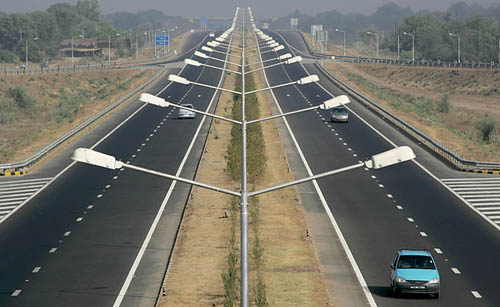Bottom Line: Real estate strategies can play a significant role in making infrastructure projects more bankable across Asia, claims a report by Colliers Research.
 A staggering infrastructure finance deficit is threatening Asia’s growth and prosperity. By 2030, an estimated US$1.7 trillion per year (or total of US$20 trillion by 2030) in infrastructure investment will be needed in the region to keep pace with economic development, sustain population growth and urbanization and mitigate the effect of climate change.
A staggering infrastructure finance deficit is threatening Asia’s growth and prosperity. By 2030, an estimated US$1.7 trillion per year (or total of US$20 trillion by 2030) in infrastructure investment will be needed in the region to keep pace with economic development, sustain population growth and urbanization and mitigate the effect of climate change.
Currently, the region invests only about half of that amount every year (US$880 billion). This means that the infrastructure investment gap across Asia will grow to over US$800 billion per year in years to come.
About, 90% of current infrastructure projects are financed by governments or government-linked agencies. As national, state and local governments reach their maximum spending and borrowing power, attracting private investments into infrastructure projects emerges as a top priority to address Asia’s infrastructure investment gap.
As a result, investors and financiers, whether private or institutional, are unwilling to finance projects where investment returns are often too low, break-even periods are too long and/or the risk is too high. The solution is to make infrastructure projects more bankable through value creation and revenue generation schemes that are attractive to private sector investors.
There is a considerable amount of capital available for financing infrastructure projects across Asia and on the other hand, a sizeable number of infrastructure projects looking for capital.
However, despite all that capital available for financing projects, many of them still go unfunded as most infrastructure projects are not financially viable on their own. Infrastructure are built first and foremost for their public benefits, so they generate limited revenue to be attractive for investors.
“Infrastructure is one of the biggest enablers of growth in real estate sector resulting in increasing opportunities for stakeholders and enhancing viability of developments. India enjoys one of the highest Infrastructure investment to GDP ratio of 9% in the world which is among the critical enablers of Housing for All mission. Constant improvement and building new infrastructure is critical to the success of affordable housing where demand has been largely unmet” says Joe Verghese, Managing Director, Colliers International India.
Real estate strategies, alongside public-private partnerships, infrastructure bonds, user’s fees, advertising and naming rights, can play a significant role in improving the bankability of projects, particularly for transportation infrastructure, by bridging the finance gap, attract private investments and supporting the long-term viability of an infrastructure asset.
“India will need about US$4.5 trillion worth of infrastructure investments till 2040, with an estimated investment shortfall of over US$500 billion. With a transparent public-private partnership framework and rigorous diligence, real estate can play a key role in bridging this gap by creating bankable infrastructure projects as well as meeting objectives like Housing for All by 2022” says Aashish Agarwal, Senior Director, Valuation & Advisory Services at Colliers International India.
Real estate strategies can play a significant role in making infrastructure projects more bankable across Asia through value creation and revenue generation schemes that are attractive to private sector investors, thereby contributing to bridging Asia’s infrastructure finance gap.
In order to be successful, infrastructure real estate strategies must provide win-win conditions for all the stakeholders involved. This includes ensuring the delivery of public benefits as expected by communities and the public sector and the possibility of a descent return on investment at an acceptable level of risk for private investors and financiers.
Real estate strategies should also factor in the strategic implications of infrastructure projects and their long-term operation and land requirements. In addition, they should consider the catalyst effect of infrastructure projects in shaping vibrant, attractive and sustainable urban destinations, whether they are airport-cities, seaports, waterfronts or transit-oriented developments.





